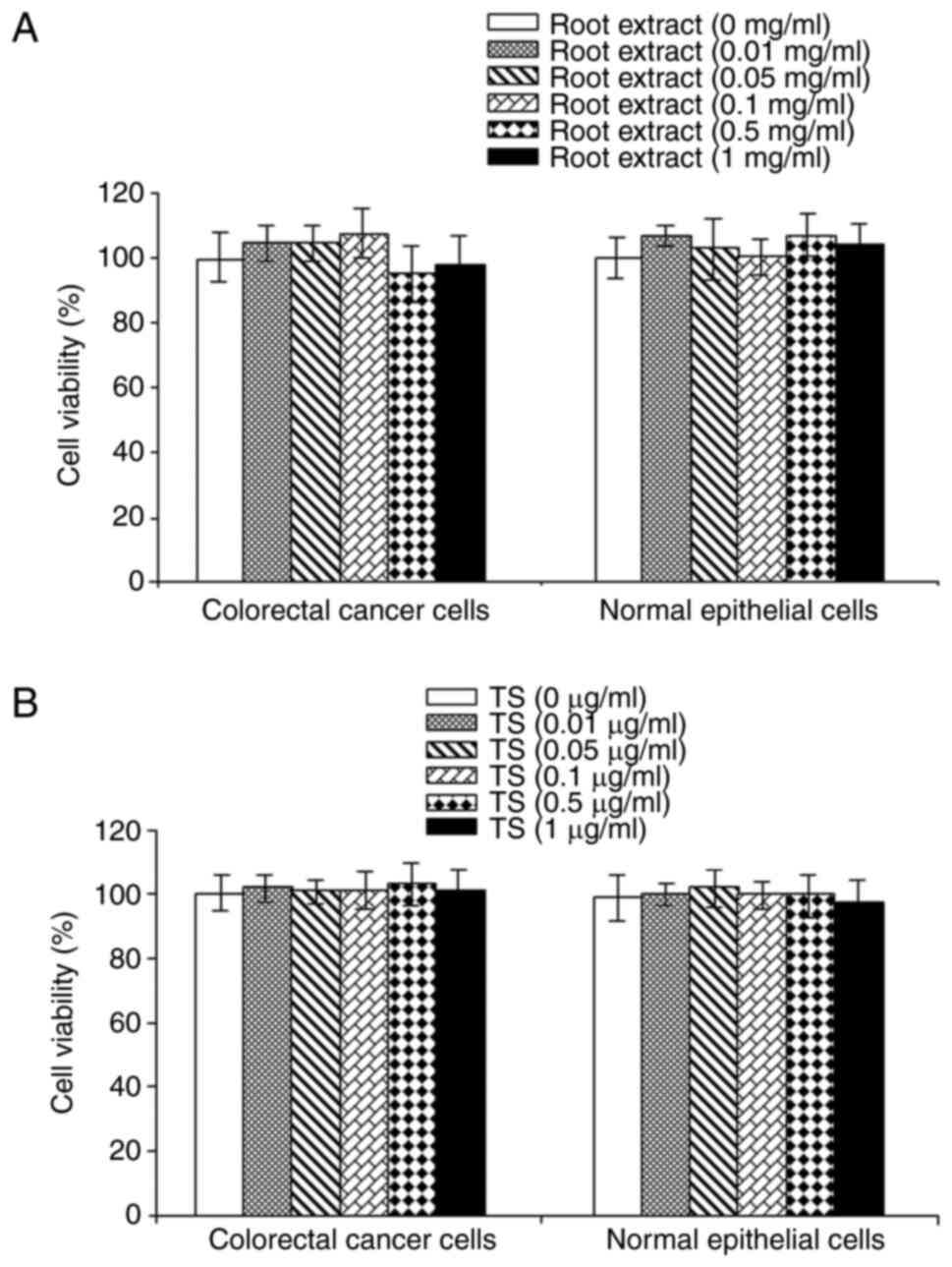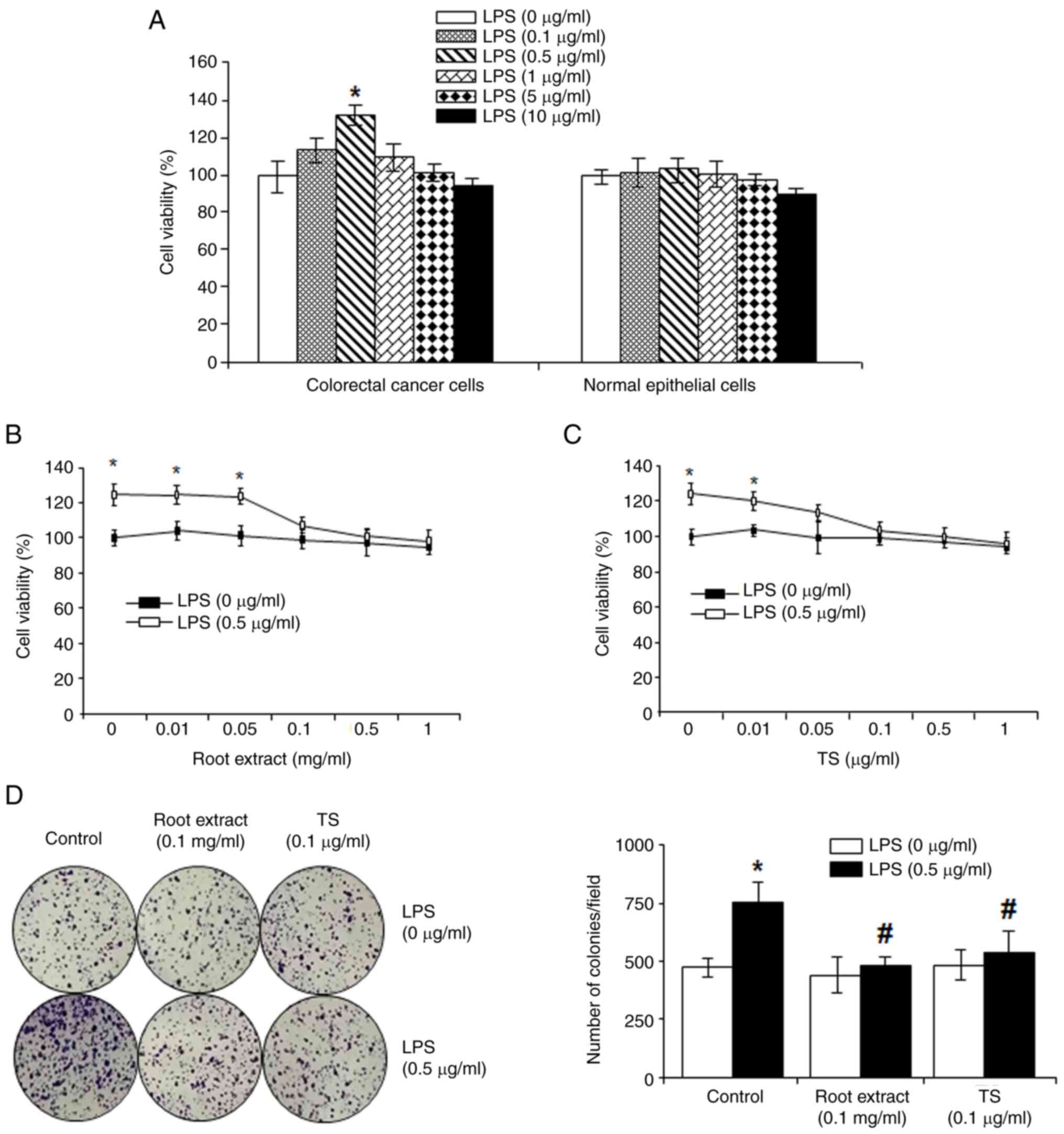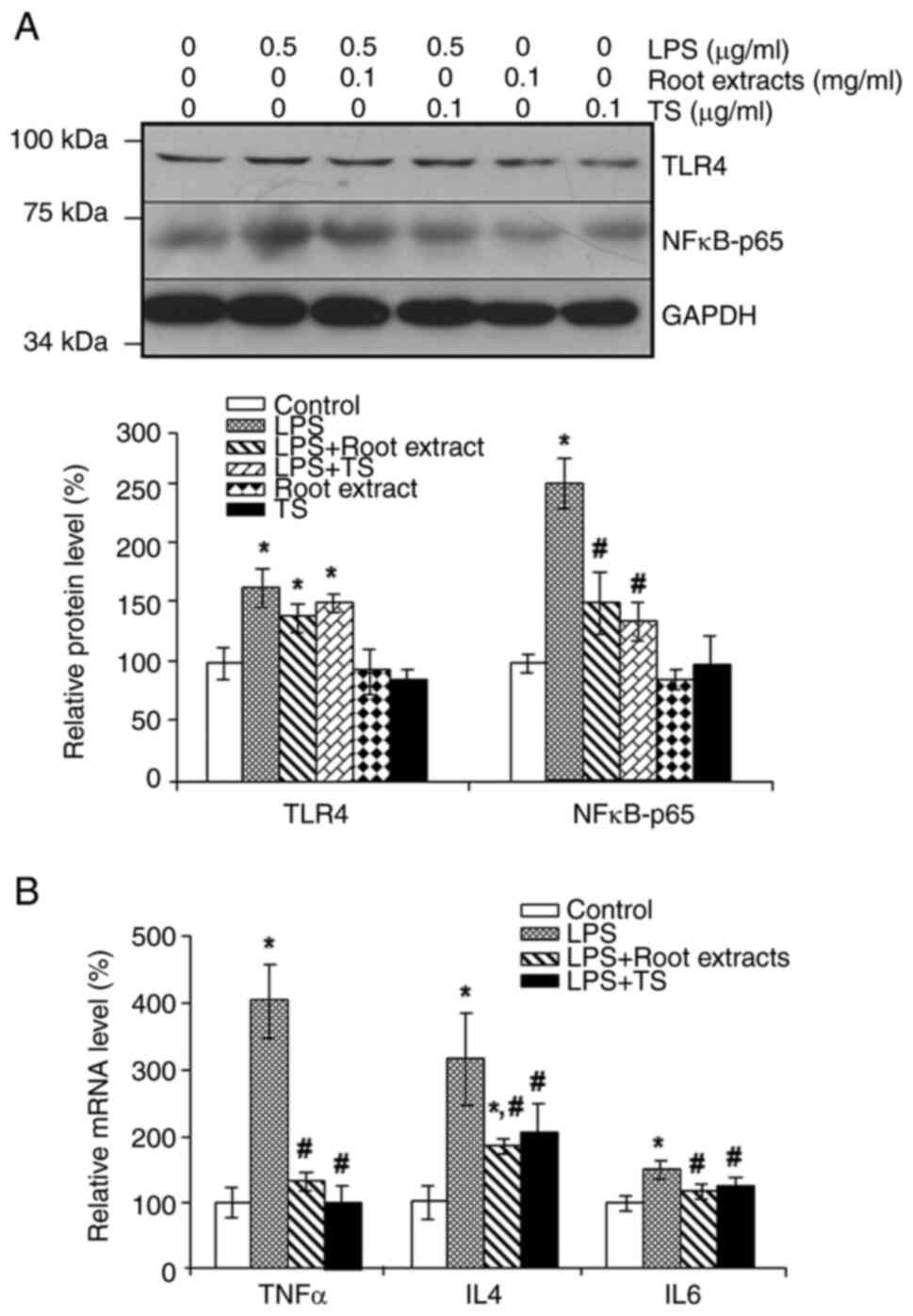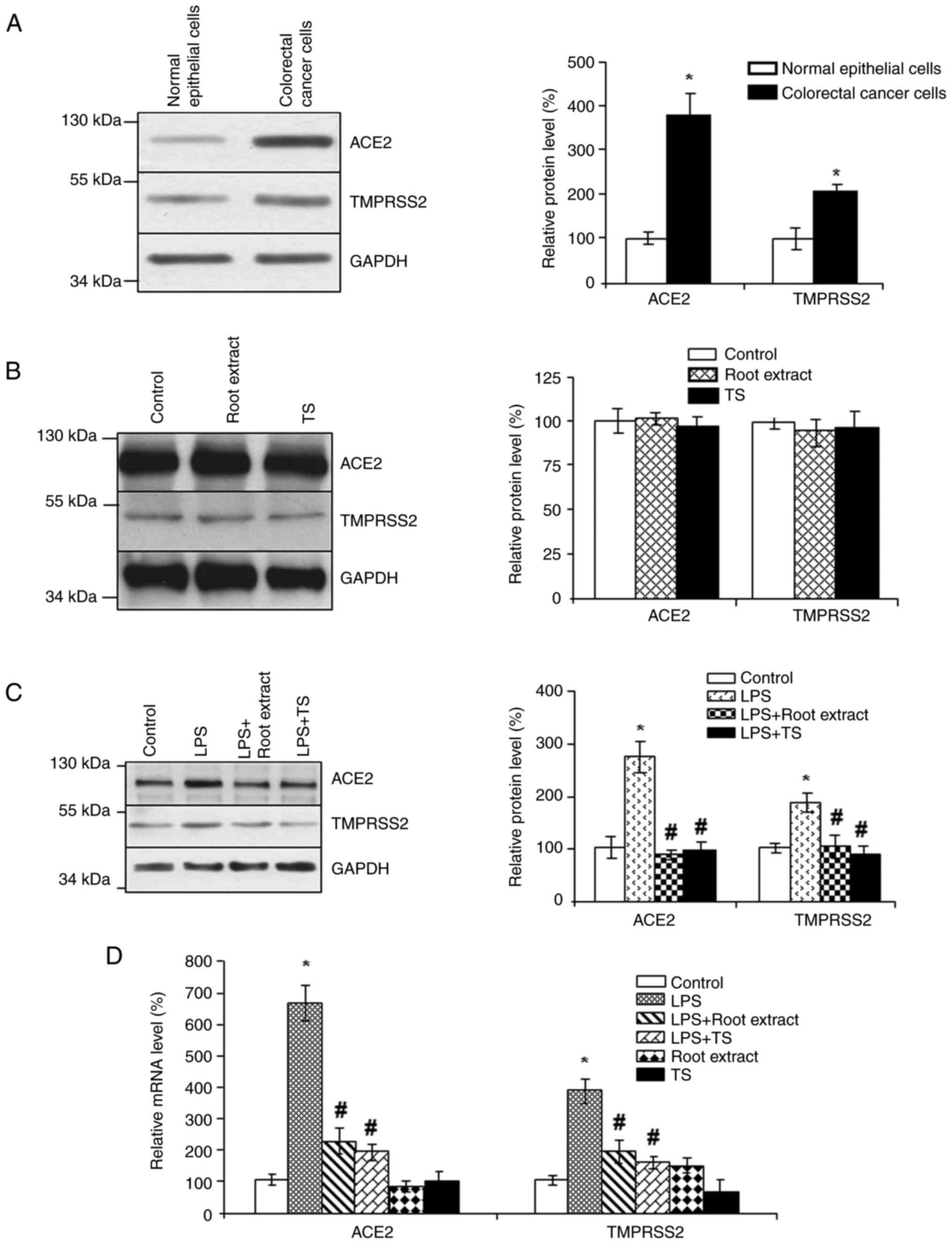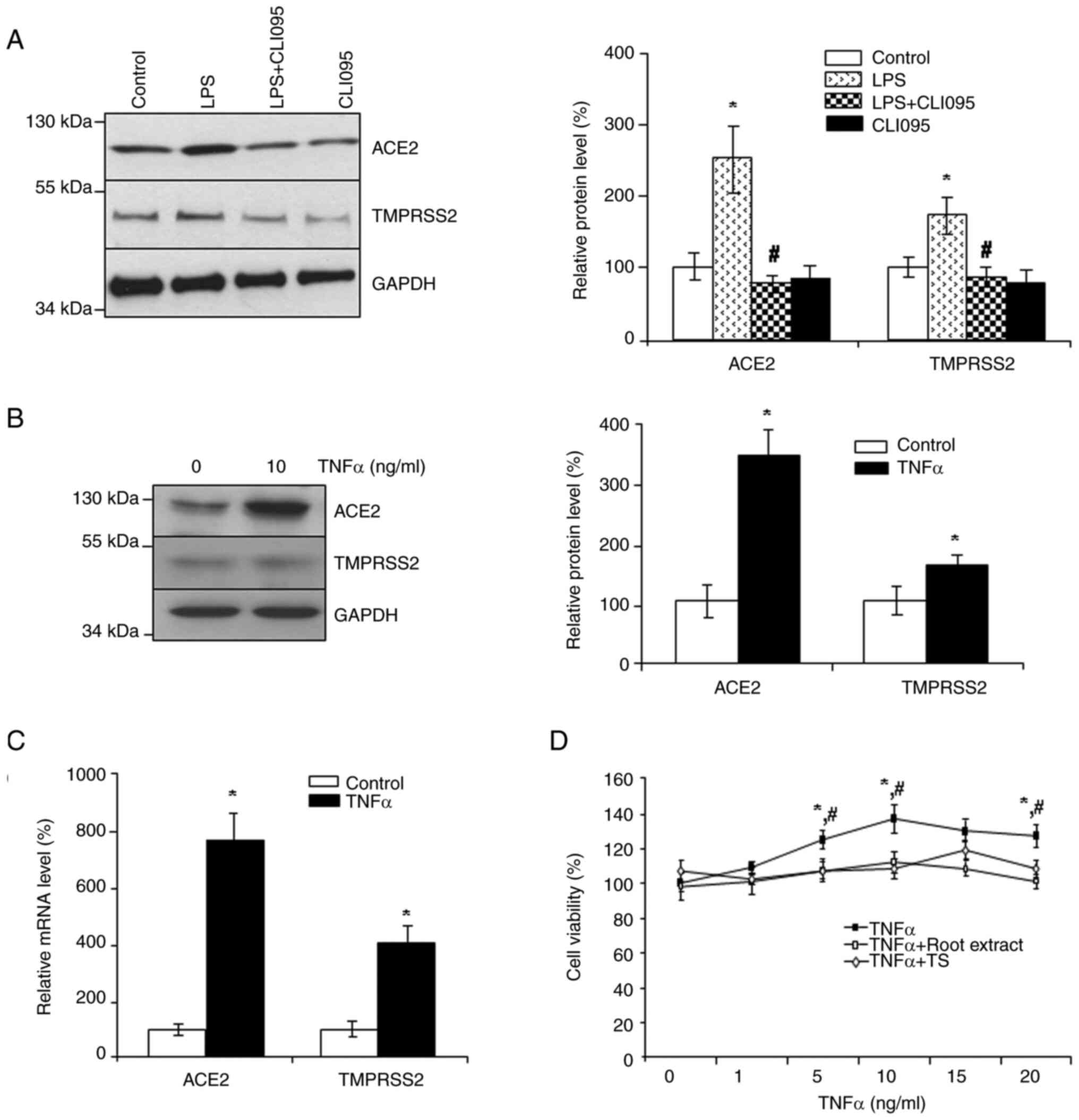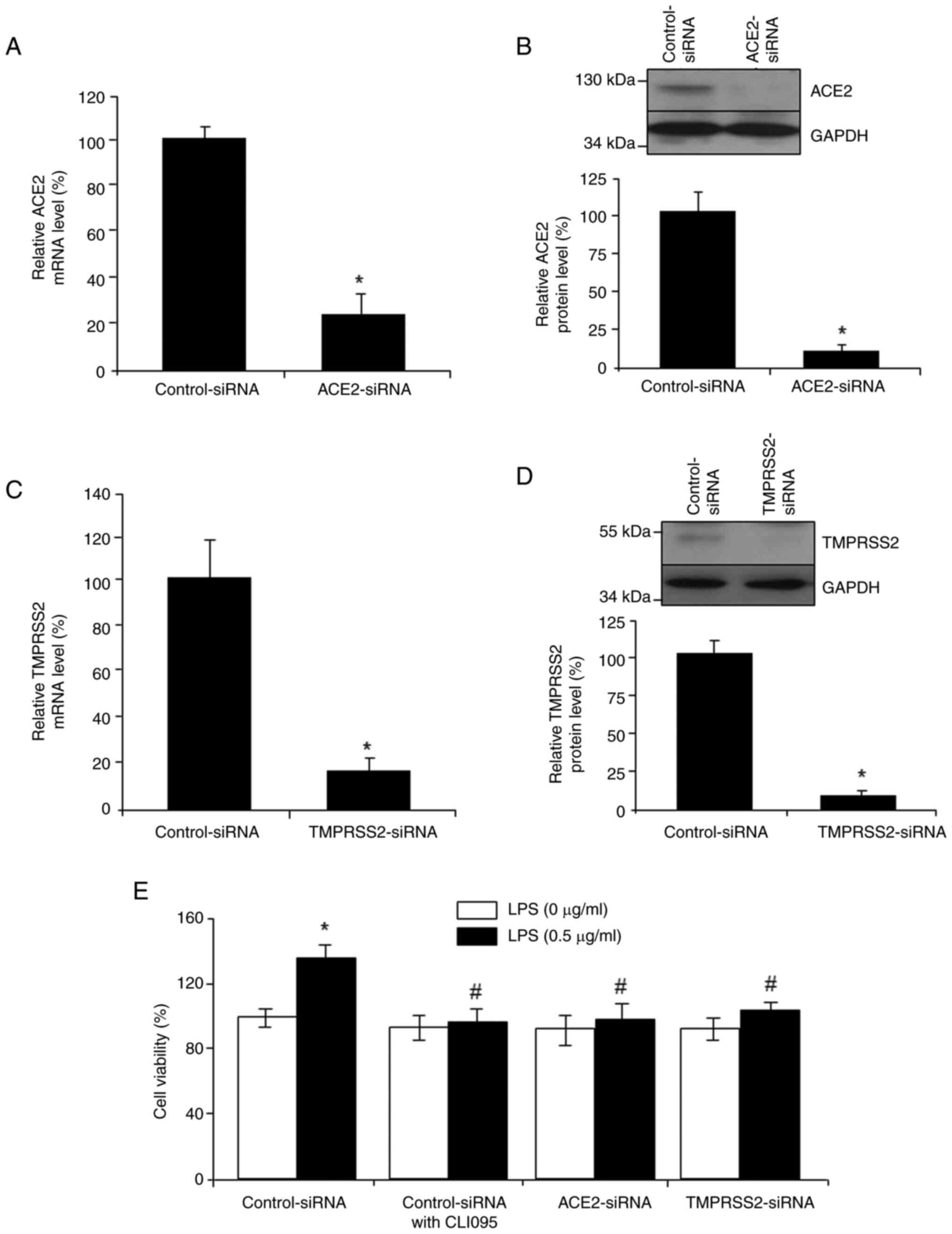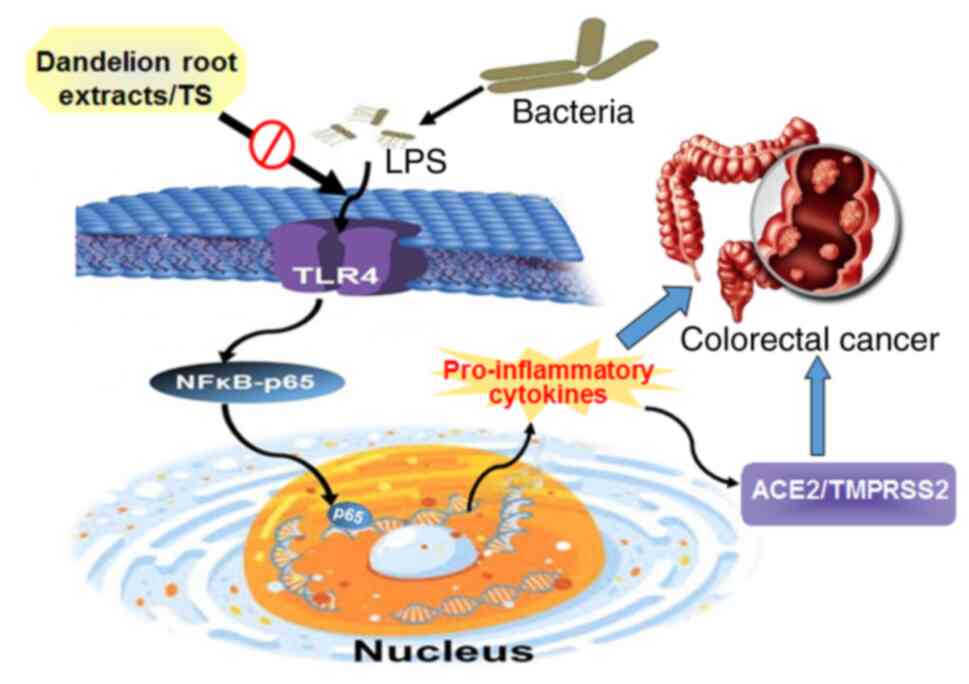|
1
|
Reis SAD, da Conceição LL and Peluzio
MDCG: Intestinal microbiota and colorectal cancer: Changes in the
intestinal microenvironment and their relation to the disease. J
Med Microbiol. 68:1391–1407. 2019.PubMed/NCBI View Article : Google Scholar
|
|
2
|
Maryam S, Krukiewicz K, Haq IU, Khan AA,
Yahya G and Cavalu S: Interleukins (cytokines) as biomarkers in
colorectal cancer: Progression, detection, and monitoring. J Clin
Med. 12(3127)2023.PubMed/NCBI View Article : Google Scholar
|
|
3
|
Hofseth LJ, Hebert JR, Chanda A, Chen H,
Love BL, Pena MM, Murphy EA, Sajish M, Sheth A, Buckhaults PJ and
Berger FG: Early-onset colorectal cancer: Initial clues and current
views. Nat Rev Gastroenterol Hepatol. 17:352–364. 2020.PubMed/NCBI View Article : Google Scholar
|
|
4
|
Collins D, Hogan AM and Winter DC:
Microbial and viral pathogens in colorectal cancer. Lancet Oncol.
12:504–512. 2011.PubMed/NCBI View Article : Google Scholar
|
|
5
|
de Waal GM, de Villiers WJS, Forgan T,
Roberts T and Pretorius E: Colorectal cancer is associated with
increased circulating lipopolysaccharide, inflammation and
hypercoagulability. Sci Rep. 10(8777)2020.PubMed/NCBI View Article : Google Scholar
|
|
6
|
Tjalsma H, Boleij A, Marchesi JR and
Dutilh BE: A bacterial driver-passenger model for colorectal
cancer: Beyond the usual suspects. Nat Rev Microbiol. 10:575–582.
2012.PubMed/NCBI View Article : Google Scholar
|
|
7
|
Lucas C, Barnich N and Nguyen HTT:
Microbiota, inflammation and colorectal cancer. Int J Mol Sci.
18(1310)2017.PubMed/NCBI View Article : Google Scholar
|
|
8
|
Chu FF, Esworthy RS, Chu PG, Longmate JA,
Huycke MM, Wilczynski S and Doroshow JH: Bacteria-induced
intestinal cancer in mice with disrupted Gpx1 and Gpx2 genes.
Cancer Res. 64:962–968. 2004.PubMed/NCBI View Article : Google Scholar
|
|
9
|
Pandey H, Tang DWT, Wong SH and Lal D: Gut
microbiota in colorectal cancer: Biological role and therapeutic
opportunities. Cancers (Basel). 15(866)2023.PubMed/NCBI View Article : Google Scholar
|
|
10
|
Mandal P: Molecular mechanistic pathway of
colorectal carcinogenesis associated with intestinal microbiota.
Anaerobe. 49:63–70. 2018.PubMed/NCBI View Article : Google Scholar
|
|
11
|
Kasai C, Sugimoto K, Moritani I, Tanaka J,
Oya Y, Inoue H, Tameda M, Shiraki K, Ito M, Takei Y and Takase K:
Comparison of human gut microbiota in control subjects and patients
with colorectal carcinoma in adenoma: Terminal restriction fragment
length polymorphism and next-generation sequencing analyses. Oncol
Rep. 35:325–333. 2016.PubMed/NCBI View Article : Google Scholar
|
|
12
|
Pitari GM, Zingman LV, Hodgson DM,
Alekseev AE, Kazerounian S, Bienengraeber M, Hajnóczky G, Terzic A
and Waldman SA: Bacterial enterotoxins are associated with
resistance to colon cancer. Proc Natl Acad Sci USA. 100:2695–2699.
2003.PubMed/NCBI View Article : Google Scholar
|
|
13
|
Abdelhamid AM, Deeb ME and Zaafan MA: The
protective effect of xanthenone against LPS-induced COVID-19 acute
respiratory distress syndrome (ARDS) by modulating the ACE2/Ang-1-7
signaling pathway. Eur Rev Med Pharmacol Sci. 26:5285–5296.
2022.PubMed/NCBI View Article : Google Scholar
|
|
14
|
Seo GS: The role of NF-kappaB in colon
cancer. Korean J Gastroenterol. 57:3–7. 2011.PubMed/NCBI View Article : Google Scholar : (In Korean).
|
|
15
|
O'Leary DP, Bhatt L, Woolley JF, Gough DR,
Wang JH, Cotter TG and Redmond HP: TLR-4 signalling accelerates
colon cancer cell adhesion via NF-κB mediated transcriptional
up-regulation of Nox-1. PLoS One. 7(e44176)2012.PubMed/NCBI View Article : Google Scholar
|
|
16
|
Killeen SD, Wang JH, Andrews EJ and
Redmond HP: Bacterial endotoxin enhances colorectal cancer cell
adhesion and invasion through TLR-4 and NF-kappaB-dependent
activation of the urokinase plasminogen activator system. Br J
Cancer. 100:1589–1602. 2009.PubMed/NCBI View Article : Google Scholar
|
|
17
|
Ranneh Y, Akim AM, Hamid HA, Khazaai H,
Fadel A and Mahmoud AM: Stingless bee honey protects against
lipopolysaccharide induced-chronic subclinical systemic
inflammation and oxidative stress by modulating Nrf2, NF-κB and p38
MAPK. Nutr Metab (Lond). 16(15)2019.PubMed/NCBI View Article : Google Scholar
|
|
18
|
An X, Lin W, Liu H, Zhong W, Zhang X, Zhu
Y, Wang X, Li J and Sheng Q: SARS-CoV-2 host receptor ACE2 protein
expression atlas in human gastrointestinal tract. Front Cell Dev
Biol. 9(659809)2021.PubMed/NCBI View Article : Google Scholar
|
|
19
|
Bernardi S, Zennaro C, Palmisano S,
Velkoska E, Sabato N, Toffoli B, Giacomel G, Buri L, Zanconati F,
Bellini G, et al: Characterization and significance of ACE2 and Mas
receptor in human colon adenocarcinoma. J Renin Angiotensin
Aldosterone Syst. 13:202–209. 2012.PubMed/NCBI View Article : Google Scholar
|
|
20
|
Liu C, Wang K, Zhang M, Hu X, Hu T, Liu Y,
Hu Q, Wu S and Yue J: High expression of ACE2 and TMPRSS2 and
clinical characteristics of COVID-19 in colorectal cancer patients.
NPJ Precis Oncol. 5(1)2021.PubMed/NCBI View Article : Google Scholar
|
|
21
|
Reindl-Schwaighofer R, Eskandary F, Bartko
J, Heinzel A, Jilma B, Hecking M and Schoergenhofer C:
Corticosteroid treatment prevents lipopolysaccharide-induced
increase of ACE2 and reduces fibrin degradation products in
bronchoalveolar lavage fluid. Front Med (Lausanne).
9(856891)2022.PubMed/NCBI View Article : Google Scholar
|
|
22
|
Burgueño JF, Reich A, Hazime H, Quintero
MA, Fernandez I, Fritsch J, Santander AM, Brito N, Damas OM,
Deshpande A, et al: Expression of SARS-CoV-2 entry molecules ACE2
and TMPRSS2 in the gut of patients with IBD. Inflamm Bowel Dis.
26:797–808. 2020.PubMed/NCBI View Article : Google Scholar
|
|
23
|
Zabiegala A, Kim Y and Chang KO: Roles of
host proteases in the entry of SARS-CoV-2. Anim Dis.
3(12)2023.PubMed/NCBI View Article : Google Scholar
|
|
24
|
Ahmadi M, Pashangzadeh S, Mousavi P,
Saffarzadeh N, Habibi MA, Hajiesmaeili F and Rezaei N: ACE2
correlates with immune infiltrates in colon adenocarcinoma:
Implication for COVID-19. Int Immunopharmacol.
95(107568)2021.PubMed/NCBI View Article : Google Scholar
|
|
25
|
Hfaiedh M, Brahmi D and Zourgui L:
Hepatoprotective effect of Taraxacum officinale leaf extract
on sodium dichromate-induced liver injury in rats. Environ Toxicol.
31:339–349. 2016.PubMed/NCBI View Article : Google Scholar
|
|
26
|
Sigstedt SC, Hooten CJ, Callewaert MC,
Jenkins AR, Romero AE, Pullin MJ, Kornienko A, Lowrey TK,
Slambrouck SV and Steelant WF: Evaluation of aqueous extracts of
Taraxacum officinale on growth and invasion of breast and
prostate cancer cells. Int J Oncol. 32:1085–1090. 2008.PubMed/NCBI
|
|
27
|
Ovadje P, Ammar S, Guerrero JA, Arnason JT
and Pandey S: Dandelion root extract affects colorectal cancer
proliferation and survival through the activation of multiple death
signalling pathways. Oncotarget. 7:73080–73100. 2016.PubMed/NCBI View Article : Google Scholar
|
|
28
|
Ding A and Wen X: Dandelion root extract
protects NCM460 colonic cells and relieves experimental mouse
colitis. J Nat Med. 72:857–866. 2018.PubMed/NCBI View Article : Google Scholar
|
|
29
|
Sharma K and Zafar R: Occurrence of
taraxerol and taraxasterol in medicinal plants. Pharmacogn Rev.
9:19–23. 2015.PubMed/NCBI View Article : Google Scholar
|
|
30
|
Liu B, He Z, Wang J, Xin Z, Wang J, Li F
and Fu Y: Taraxasterol inhibits LPS-induced inflammatory response
in BV2 microglia cells by activating LXRα. Front Pharmacol.
9(278)2018.PubMed/NCBI View Article : Google Scholar
|
|
31
|
Che L, Li Y, Song R, Qin C, Hao W, Wang B,
Yang L, Peng P and Xu F: Anti-inflammatory and anti-apoptosis
activity of taraxasterol in ulcerative colitis in vitro and in
vivo. Exp Ther Med. 18:1745–1751. 2019.PubMed/NCBI View Article : Google Scholar
|
|
32
|
Zhang X, Xiong H, Li H and Cheng Y:
Protective effect of taraxasterol against LPS-induced endotoxic
shock by modulating inflammatory responses in mice. Immunopharmacol
Immunotoxicol. 36:11–16. 2014.PubMed/NCBI View Article : Google Scholar
|
|
33
|
Cho SY, Park JY, Park EM, Choi MS, Lee MK,
Jeon SM, Jang MK, Kim MJ and Park YB: Alternation of hepatic
antioxidant enzyme activities and lipid profile in
streptozotocin-induced diabetic rats by supplementation of
dandelion water extract. Clin Chim Acta. 317:109–117.
2002.PubMed/NCBI View Article : Google Scholar
|
|
34
|
Barrow K, Wang Y, Yu R, Zhu J and Yang G:
H2S protects from oxidative stress-driven ACE2
expression and cardiac aging. Mol Cell Biochem. 477:1393–1403.
2022.PubMed/NCBI View Article : Google Scholar
|
|
35
|
Li L, Li M, Li Y, Sun W, Wang Y, Bai S, Li
H, Wu B, Yang G, Wang R, et al: Exogenous H2S
contributes to recovery of ischemic post-conditioning-induced
cardioprotection by decrease of ROS level via down-regulation of
NF-κB and JAK2-STAT3 pathways in the aging cardiomyocytes. Cell
Biosci. 6(26)2016.PubMed/NCBI View Article : Google Scholar
|
|
36
|
Livak KJ and Schmittgen TD: Analysis of
relative gene expression data using real-time quantitative PCR and
the 2(-Delta Delta C(T)) method. Methods. 25:402–408.
2001.PubMed/NCBI View Article : Google Scholar
|
|
37
|
Yang Y, Yang L, Jiang S, Yang T, Lan J,
Lei Y, Tan H and Pan K: HMGB1 mediates lipopolysaccharide-induced
inflammation via interacting with GPX4 in colon cancer cells.
Cancer Cell Int. 20(205)2020.PubMed/NCBI View Article : Google Scholar
|
|
38
|
Yang K and Zhang Y: Reversal of heavy
metal-induced antibiotic resistance by dandelion root extracts and
taraxasterol. J Med Microbiol. 69:1049–1061. 2020.PubMed/NCBI View Article : Google Scholar
|
|
39
|
Sun Q, Liu Q, Zheng Y and Cao X: Rapamycin
suppresses TLR4-triggered IL-6 and PGE(2) production of colon
cancer cells by inhibiting TLR4 expression and NF-kappaB
activation. Mol Immunol. 45:2929–2936. 2008.PubMed/NCBI View Article : Google Scholar
|
|
40
|
Ying J, Zhou H, Wang Z, You Q, Chen J, Lu
H and Zhang J: Aspirin increases chemosensitivity of colorectal
cancer cells and inhibits the expression of toll-like receptor 4.
Cancer Cell Int. 23(6)2023.PubMed/NCBI View Article : Google Scholar
|
|
41
|
Zhuo Q, Yu B, Zhou J, Zhang J, Zhang R,
Xie J, Wang Q and Zhao S: Lysates of Lactobacillus acidophilus
combined with CTLA-4-blocking antibodies enhance antitumor immunity
in a mouse colon cancer model. Sci Rep. 9(20128)2019.PubMed/NCBI View Article : Google Scholar
|
|
42
|
Li Z, Wang K, Ji X, Wang H and Zhang Y:
ACE2 suppresses the inflammatory response in LPS-induced porcine
intestinal epithelial cells via regulating the NF-κB and MAPK
pathways. Peptides. 149(170717)2022.PubMed/NCBI View Article : Google Scholar
|
|
43
|
Lin X, Lin W, Zhuang Y and Gao F:
Angiotensin-converting enzyme 2 inhibits lipopolysaccharide-caused
lung fibrosis via downregulating the transforming growth factor
β-1/Smad2/Smad3 pathway. J Pharmacol Exp Ther. 381:236–246.
2022.PubMed/NCBI View Article : Google Scholar
|
|
44
|
Cheng J, Zhou J, Fu S, Fu J, Zhou B, Chen
H, Fu J and Wei C: Prostate adenocarcinoma and COVID-19: The
possible impacts of TMPRSS2 expressions in susceptibility to
SARS-CoV-2. J Cell Mol Med. 25:4157–4165. 2021.PubMed/NCBI View Article : Google Scholar
|
|
45
|
Klooster JPT, Bol-Schoenmakers M, van
Summeren K, van Vliet ALW, de Haan CAM, van Kuppeveld FJM,
Verkoeijen S and Pieters R: Enterocytes, fibroblasts and myeloid
cells synergize in anti-bacterial and anti-viral pathways with IL22
as the central cytokine. Commun Biol. 4(631)2021.PubMed/NCBI View Article : Google Scholar
|
|
46
|
Tran HTT, Gigl M, Le NPK, Dawid C and Lamy
E: In vitro effect of Taraxacum officinale leaf aqueous
extract on the interaction between ACE2 cell surface receptor and
SARS-CoV-2 spike protein D614 and four mutants. Pharmaceuticals
(Basel). 14(1055)2021.PubMed/NCBI View Article : Google Scholar
|
|
47
|
Zhang X, Jia F, Ma W, Li X and Zhou X:
DAD3 targets ACE2 to inhibit the MAPK and NF-κB signalling pathways
and protect against LPS-induced inflammation in bovine mammary
epithelial cells. Vet Res. 53(104)2022.PubMed/NCBI View Article : Google Scholar
|



